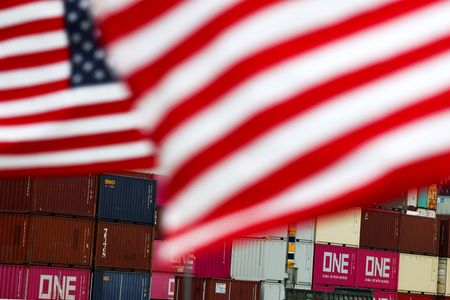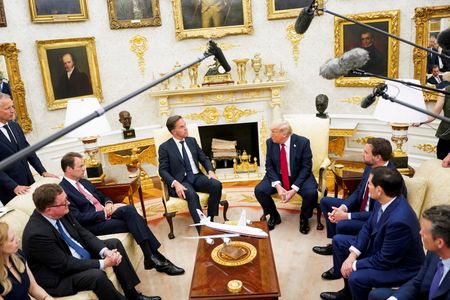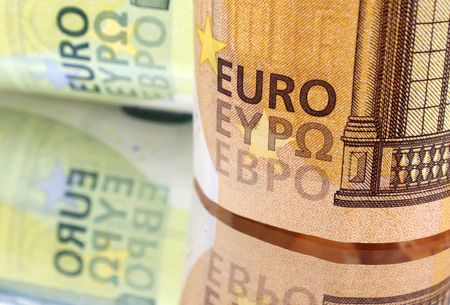ORLANDO, Florida (Reuters) -TRADING DAY
Making sense of the forces driving global markets
By Jamie McGeever, Markets Columnist
World markets were, on the whole, pretty buoyant on Monday as investors shrugged off U.S. President Donald Trump’s latest tariff threats over the weekend and braced for a deluge of top-tier economic data from the U.S. and China on Tuesday.
While European and Mexican stocks did wobble on Trump’s latest trade salvo, the hits were minor. Risk appetite held firm – world equity benchmarks inched up, the Nasdaq and bitcoin hit new highs, and silver reached a fresh 14-year peak.
If you have more time to read, here are a few articles I recommend to help you make sense of what happened in markets today.
1. Don’t panic: Europe Inc cautions calm as bloc tries toavert 30% U.S. tariffs 2. Currency FOMO may yet draw U.S. investors overseas: MikeDolan 3. Central bank independence needs a better defence 4. Why Trump’s push for a 1% Fed policy rate could spelltrouble for U.S. economy 5. Wealth funds warm to active management – and China – toweather volatility, report shows
Today’s Key Market Moves
* World stocks tread water, with Wall Street’s rise offsetby general softness in Asia and Europe. European and Mexicanstocks fall on Trump’s 30% tariff threat. * Canadian stocks, spared from the latest threat for now,rise 0.6% to a new high of 27142 points. * The dollar continues to recover, rising to a three-weekhigh on an index basis. A sixth straight gain marks its best runthis year. * Bitcoin leaps to record $123,236 before settling around$120,000. It’s up more than 10% in the last week. * Silver slips on the day, but not before hitting a new14-year high above $39/oz. The $40/oz barrier is in sight.
Resisting renewed tariff tensions
Markets started a busy week on a solid footing on Monday, as investors withstood the latest escalation in Trump’s tariff war with two of America’s largest trading partners, and dug in ahead of key market-sensitive economic and corporate events in the coming days.
After Trump on Saturday said he would impose a 30% tariff on most imports from the EU and Mexico from August 1, the EU on Sunday said it would extend its suspension of countermeasures until early August and continue to press for a negotiated settlement.
The euro and European stocks fell – the single currency hitting a three-week low – but the declines were small. Investors still appear to be optimistic that talks will ultimately be fruitful and a palatable deal will be reached.
Trade figures from China earlier in the day were certainly better than expected, although they were boosted by exporters rushing to beat a fragile tariff truce between Beijing and Washington ahead of a looming August deadline. Exports rose 5.8% year-on-year and imports rebounded 1.1%.
The next couple of weeks will see bilateral U.S.-EU and U.S.-China trade talks intensify as the early August deadlines approach, and investors can expect a blizzard of headlines to hit their screens. If Monday is any guide, investors are well poised to weather the incoming storm.
Trade may have been the main narrative for stock markets on Monday, but less so bonds, which also had the shadows of Federal Reserve independence, Chair Jerome Powell’s future, and renewed weakness in Japanese government bonds hanging over them.
The U.S. Treasury market was mostly stable although the 30-year yield did flirt with 5.00% and hit a one-month high. Government bond prices elsewhere came under heavier pressure, particularly at the long end of the German and Japanese curves.
The 10-year Bund yield rose to its highest since early April and the 30-year Bund yield climbed to highs not seen in almost two years. Yields on Japanese government bonds surged back toward the historic highs from May, on concern that an upcoming election could pave the way for increased fiscal spending.
Investors’ attention on Tuesday will turn to the monthly economic ‘data dump’ from China, which also includes second quarter GDP figures. Economists polled by Reuters expect the annual growth rate to have slowed slightly to 5.1% from 5.4% in the January-March period.
After that, U.S. CPI inflation figures for June will set the tone for the U.S. trading day. Economists expect inflation to rise moderately across all measures – core, headline, monthly and annual – with the annual core rate regaining a 3% handle.
What could move markets tomorrow?
* Australia consumer sentiment (July) * China house prices, industrial output, retail sales, urbaninvestment, unemployment (June) * China GDP (Q2) * Germany ZEW sentiment indices (July) * Euro zone industrial production (May) * Canada CPI (June) * U.S. CPI (June) * U.S. ‘Empire State’ manufacturing index (July) * U.S. Fed officials scheduled to give public remarks:Governor Michael Barr, Richmond Fed President Thomas Barkin,Boston Fed resident Susan Collins, Dallas Fed President LorieLogan
Want to receive Trading Day in your inbox every weekday morning? Sign up for my newsletter here.
Opinions expressed are those of the author. They do not reflect the views of Reuters News, which, under the Trust Principles, is committed to integrity, independence, and freedom from bias.
(By Jamie McGeever)










